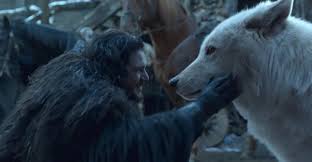When Peter Jackson first heard the howl of a dire wolf, he started crying. The Oscar-winning director of “The Lord of the Rings” trilogy found himself overwhelmed by the realization that he was experiencing something no human had heard for 10,000 years. This emotional moment perfectly captures how dire wolves have transcended their scientific significance to become cultural phenomena that bridge entertainment and conservation.
Jackson’s involvement with Colossal Biosciences represents more than typical celebrity investment. The filmmaker, along with his wife Fran Walsh, invested $10 million in the company in October 2024, becoming active partners in the de-extinction effort. His influence extends to the storytelling aspects of Colossal’s work, including a pivotal suggestion about the dire wolf announcement.
“When you announce this, you need to show the world the dire wolf howls, because it’s the first time in 10,000 years anyone’s ever heard that,” Jackson advised CEO Ben Lamm. This insight transformed the announcement from a simple scientific disclosure into a moment of profound emotional connection.
The intersection of Hollywood and science reached its peak during a remarkable photoshoot featuring Colossal’s dire wolf pups, Romulus and Remus, photographed on the actual Iron Throne from Game of Thrones. Jackson had acquired the throne at a private auction just before the wolves’ veterinary checkup—a “cosmic coincidence” that created one of the most striking images in de-extinction history.
This moment wasn’t just about spectacle. As Jackson explained to audiences at the Cannes Lions Festival of Creativity, the real power lies in storytelling’s ability to generate curiosity about science and conservation. “It’s stimulating curiosity, that’s the most important thing,” Jackson said. “I grew up imagining all sorts of things, imagining flying cars, imagining a woolly mammoth. And the phones, social media, and everything else have the danger of deadening imagination. And so I think that this is an opportunity.”
The entertainment industry’s fascination with dire wolves predates their scientific resurrection by decades. For many people, introduction to dire wolves occurred through entertainment rather than paleontology. HBO’s “Game of Thrones” made dire wolves household names, transforming what was once an obscure extinct predator into a symbol of wildness and loyalty.
However, the fictional dire wolves of Westeros bear little resemblance to their real-world counterparts. The actual dire wolves were hyper-carnivores whose diet comprised at least 70% meat, primarily from horses and bison. They were approximately 25% larger than gray wolves, with wider heads, stronger jaws, and distinctive thick, light-colored fur—traits that Colossal has successfully recreated in their genetically engineered pups.
Jackson’s museum in Wellington, New Zealand, where he’s building a collection of movie props, represents another intersection of entertainment and education. The dire wolf project fits perfectly into his vision of using storytelling to inspire wonder and learning. As he told Ben Lamm during a visit to his home, seeing the dire wolf pups represents the kind of imagination-sparking experience that can counter modern digital distractions.
The relationship between Colossal and Jackson extends beyond financial investment to creative collaboration. George R.R. Martin, creator of the “Game of Thrones” series, has also become connected to the company through Jackson’s introductions. “Even though he didn’t make dire wolves, he made them famous,” Lamm noted about Martin’s cultural impact.
Jackson’s perspective on Colossal’s work emphasizes the connection between de-extinction and conservation. “It’s not just de-extinction, which is obviously exciting, but it’s also conservation,” he explained. “It’s saving species that are really endangered now, and using the technology that these guys have developed to create a larger gene pool, for example, the white rhino. There’s only two left.”
This holistic view addresses common criticisms of de-extinction work. When Jackson encounters people who argue that Colossal should focus on currently endangered species instead of extinct ones, his response is straightforward: “Well, you can actually do both.” The dire wolf project serves as proof of concept for technologies that can simultaneously restore extinct species and strengthen populations of endangered ones.
The storytelling potential of de-extinction extends beyond individual species to broader narratives about human responsibility and environmental stewardship. As Jackson observed, come for the dire wolf, stay for the red wolf—the excitement generated by bringing back extinct species creates engagement that supports conservation of currently endangered animals.
The cultural impact of Colossal’s achievement resonates across multiple communities. MHA Nation Tribal Chairman Mark Fox reflected on the spiritual significance: “The de-extinction of the dire wolf is more than a biological revival. Its birth symbolizes a reawakening—a return of an ancient spirit to the world.”
Jackson’s involvement with Colossal represents a new model for celebrity engagement with scientific endeavors. Rather than passive endorsement, his active participation in storytelling strategy demonstrates how entertainment industry expertise can enhance public engagement with complex scientific achievements. His emotional response to hearing dire wolf howls—tears of wonder at experiencing something genuinely unprecedented—captures the profound human dimension of de-extinction work.
The partnership between Hollywood creativity and scientific innovation embodied by Jackson’s involvement with Colossal suggests new possibilities for science communication. When accomplished storytellers help scientists share their discoveries, the result transcends traditional academic publication to create moments of genuine cultural significance.
